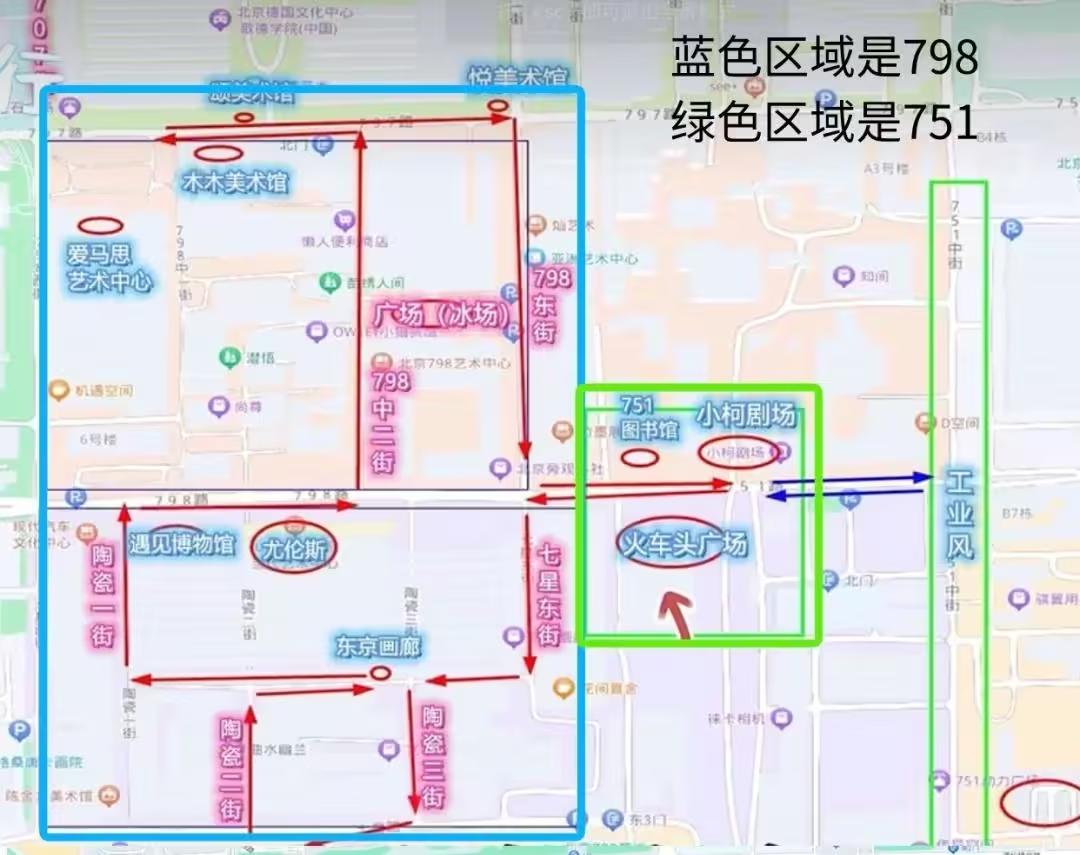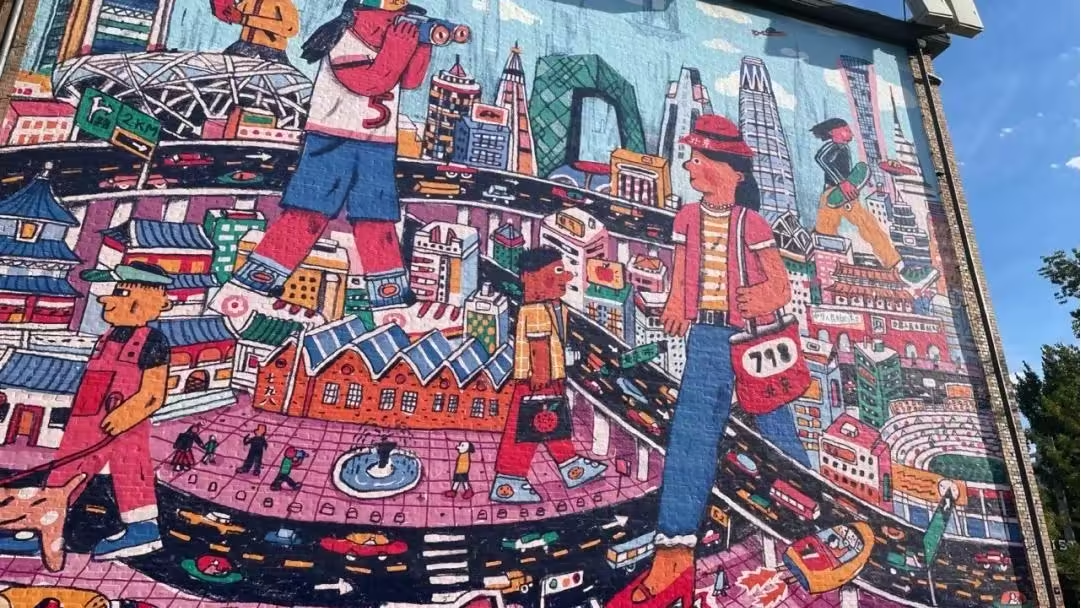Beijing’s 798 Art Zone is a creative paradise for art lovers, photographers, and anyone seeking a unique cultural experience. Comprising two large areas—798 and 751—the art district is packed with galleries, museums, trendy shops, and cafes that make it one of the city’s most exciting destinations. Whether you’re looking to explore contemporary art or capture Instagram-worthy moments, this guide provides essential tips for making the most of your visit to the 798 Art Zone, ensuring that you don’t miss any of its key highlights. Here’s everything you need to know to plan your perfect day at this iconic Beijing attraction.
General Tips for Visiting 798 Art Zone:
798 Art Zone is free to enter, and no ticket is required. The district consists of two main areas: 798 and 751, both covering vast grounds. To fully explore both areas, you’ll need at least half a day to walk around, as the entire area spans over 20,000 steps. For a comfortable visit, it’s recommended to set aside a few hours to enjoy the art zone at your own pace.
Avoid visiting on Mondays, as many galleries are closed for the day. If you’re visiting during the summer, most venues open at 10:00 AM, while in winter, they typically open at 11:00 AM.
Zones of the 798 Art District:

- Blue Zone (798 Area): This is the heart of 798 Art Zone, home to the most iconic spots like the Ullens Center for Contemporary Art (UCCA), the Museum of Encounter, Tokyo Gallery, M Woods Museum, Yue Art Museum, Song Art Center (which is free to visit), and Emes Art Center, among others. Most of the major attractions and art galleries are concentrated here.
- Green Zone (751 Area): The 751 area is centered around the famous Train Plaza, where you’ll find several industrial-style buildings that make for great photo opportunities. It also houses the Little River Theatre, the 3D Museum, and other unique spots that showcase the district’s industrial charm and artistic flair.
How to Get There:
- Public Transportation: Take Subway Line 14 and get off at Wangjing South Station. From there, cross the street to the bus station at Xibajianfang Station, where you can catch Bus 403 and get off at Dashanzi Road East Station.
Alternatively, you can take Subway Line 14 to Jiantai Station, exit from Gate A, and take Buses 401, 445, 988, or 991 at the Jiantai Road North bus stop. Get off at Dashanzi Road South Station for easy access to the art zone. - Driving: If you’re driving, avoid the South Parking Lot or Parking Tower at the entrance, as these areas are often full. Instead, use a navigation app to locate the Miwei Building or 751 Dpark, where parking is usually more available.
- Cycling: While shared bicycles aren’t allowed inside the art zone, you can bring your own bicycle, though note that bicycles are restricted between 10:00 AM and 7:00 PM. Be sure to plan your visit accordingly.
Facilities and Services:
There are several convenient amenities available throughout the 798 Art Zone. Toilets are located across the district, including one near UCCA and another at the West Gate entrance. You’ll also find a 7-11 convenience store at the West Gate, where you can purchase drinks and snacks before starting your exploration. As prices inside the art zone tend to be higher than usual, it’s a good idea to stock up on essentials at the convenience store before entering.
Unique Shopping and Dining:
In addition to galleries and exhibitions, 798 is filled with trendy boutiques and unique dining options. The area is home to a range of quirky and stylish shops that sell everything from vintage items to handmade crafts. You can find a mix of high-end and affordable products, offering plenty of opportunities to shop for something unusual and creative.
For food, there are several restaurants and cafes to choose from. While prices at most cafes and restaurants in 798 are on the higher side, there are a few budget-friendly options available. In particular, the area around Ceramic Street offers several reasonably priced Chinese restaurants. Additionally, some smaller art galleries offer free entry and are perfect for a more budget-conscious experience.
Winter and Summer Activities:
During the winter months, you’ll find an ice rink in the Second Street area of 798, although it’s small and the prices aren’t cheap. In the summer, the same space transforms into a market with street vendors selling various goods. This is a popular spot for both locals and tourists, as the lively market atmosphere adds a fun, festive vibe to the area.
Recommended Route for Exploring:
For those looking to explore efficiently, it’s recommended to enter through the West Gate 1 and exit through West Gate 2. This route ensures that you pass through the key highlights, and from the exit, you’ll find the Wangyefen Bus Station nearby, which connects to several major bus routes like 401, 405, 445, 988, and 991. These buses will take you to major subway stations like Wangjing South and Jiantai.
Start by exploring the 797 route, which is filled with newer galleries and shops, making it popular among younger visitors. This area is filled with fresh and modern art exhibitions, along with a few trendy cafés and shops.
Additional Tips:
- There are some vending machines in the area that sell desserts and snacks. While not particularly cheap and with average taste, these machines are cute and can also serve as interesting photo props.
- If you’re planning on visiting multiple galleries, be sure to check their opening hours online before you go, as they may vary, especially during holidays or special events.
- Although many areas in the 798 Art Zone are free to explore, some galleries and special exhibitions may charge for admission. It’s best to check in advance for any special exhibitions or events that might require tickets.

